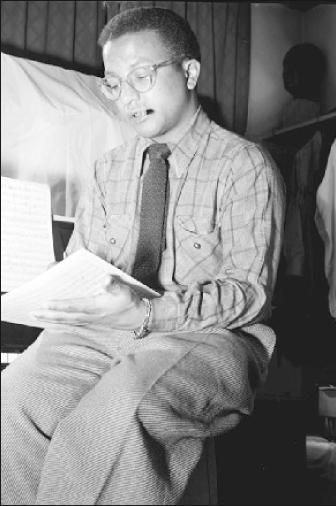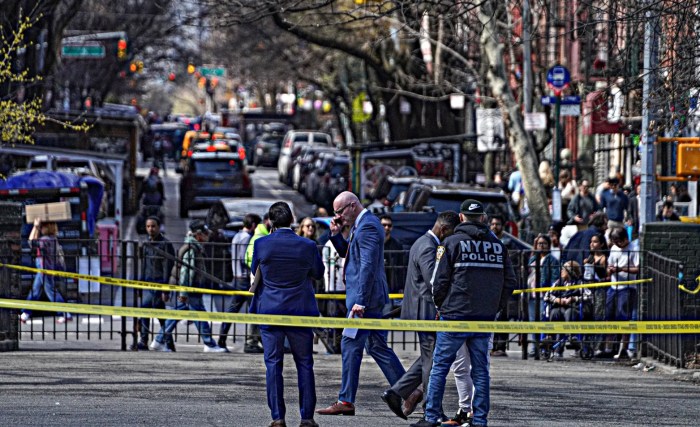By Andrey Henkin
Composer Billy Strayhorn finally gets his due
Most documentaries follow one of two formulas: someone starting from nothing who gets everything or someone starting from nothing who gets everything and then loses it all. Neither scenario really addresses the complexities of the life of composer Billy Strayhorn. Born in 1921, he grew up in Pittsburgh, met Duke Ellington there, and spent 29 years as Ellington’s primary songwriting partner (or songwriter, as the movie implies). He then died in 1967 from esophageal cancer, stemming from a lifetime of smoking. That is the very short story.
The detailed one, richly visualized in Robert Levi’s film, “Billy Strayhorn: Lush Life,” is much more complicated. Through interviews, priceless live footage, and archival photographs, Levi attempts with some success to illuminate Strayhorn’s humble beginnings, his uneasy relationship with bandleader Duke Ellington, his life as a gay man in the first half of the 20th century, and, most importantly, his eventual recognition as one of jazz’s most significant songwriters.
What is most interesting and of most interest to viewers of the documentary is Strayhorn’s bond with Ellington. Strayhorn wrote or co-wrote some of Ellington’s best loved later works such as “Lotus Blossom,” “Chelsea Bridge,” “Lush Life,” “Take The A Train,” “Satin Doll,” “C-Jam Blues,” and “The Far East Suite.” What the documentary — based on the biography of the same name by David Hajdu — reveals is that Ellington exploited Strayhorn, either by taking wholesale credit for his pieces, or claiming collaboration where there was none. Ellington’s famous smile takes on an ominous air as the documentary recounts numerous instances where Ellington felt that he should get all the credit, as he was the one people were coming to hear, or when he needed music for a commission immediately and Strayhorn would, with seemingly endless creativity, oblige. The relationship becomes more knotty when one realizes that Strayhorn, at least in the beginning, was complicit in this arrangement. Because of Ellington’s unique position as an immensely popular entertainer, Strayhorn was living a life otherwise unthinkable for an African-American gay man in the post-WWII era. Eventually Strayhorn would get proper acknowledgement from both Ellington and the listening public, but initially he was completely consumed by Ellington’s colossal personality.
The movie takes on other facets of his life, though in less detail, like his sexuality, his love for Paris (where he lived on and off), and his deep involvement in the burgeoning Civil Rights Movement, though their effect on his music are not discussed in the depth that is accorded to his affiliation with Ellington.
Apart from its biographical significance, the film gives insight into the jazz world during the height and eventual fall of the big band era. One such segment involved a 1941 ASCAP (American Society of Composers, Authors and Publishers) strike. Ellington was one of ASCAP’s most successful artists and was booked for an extended engagement to start the new year, with portions of the performances to be played on the radio each evening. With the strike in place, none of his popular material could be aired. Desperate, he turned to Strayhorn, just new to the band, and his son Mercer, to write an entire new book for the band so the radio promotion could continue as planned. The two spent a weeklong train trip from Chicago to Los Angeles (where the band was rehearsing) writing dozens of new songs, including what would become Ellington’s signature song, “Take the A Train” — a piece Strayhorn initially discarded but developed at Mercer’s coaxing.
Interspersed through the film are live performances of Strayhorn material by modern jazz players taken from the accompanying Blue Note soundtrack album. Seeing Strayhorn’s music played by such figures as Hank Jones, Dianne Reeves, and even Elvis Costello is touching, but the sudden shifts into the modern era and the fact that no song is played in its entirety interrupts the linear flow of the film.
The stories and footage are impressive enough but the significance of Strayhorn, long in the shadow of Ellington, can best be established by the roster of legendary jazz players who Levi interviews during the course of the film. These figures, some whose opinions are refreshingly more candid than usual documentary fare, make the most compelling case for Strayhorn’s reputation as a genius. His legacy, much better understood now than during his lifetime, lives on through the work of these masters and now through this loving and long-overdue film about the man called Sweet Pea.


















